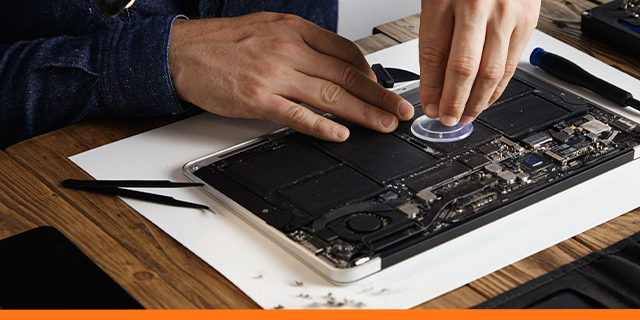MacBooks are renowned for their sleek design, robust performance, and intuitive user experience. However, like any electronic device, they can encounter issues from time to time. Whether you’re a seasoned Apple enthusiast or a recent convert, knowing how to troubleshoot common problems can save you time, frustration, and a trip to the repair shop. At hellore.in, we understand the importance of keeping your tech running smoothly. That’s why we’ve compiled a list of five common MacBook problems and practical ways to address them.
- Slow Performance:
Is your once zippy MacBook now crawling? Several factors can contribute to sluggishness.
- Too Many Apps Running: Having numerous applications open simultaneously can hog system resources. Close unnecessary apps, especially those you aren’t actively using. Use Activity Monitor (found in Applications > Utilities) to identify resource-intensive processes and quit them.
- Full Hard Drive: When your hard drive is nearing capacity, your MacBook can struggle to operate efficiently. Delete large, unused files, empty your Trash, and consider moving files to an external drive or cloud storage.
- Outdated macOS: Keeping your macOS up to date ensures you have the latest performance improvements and bug fixes. Go to System Settings (or System Preferences) > General > Software Update and install any available updates.
- Startup Items: Some applications automatically launch when you start your MacBook, consuming resources in the background. Manage startup items by going to System Settings (or System Preferences) > General > Login Items. Disable any unnecessary applications from opening at startup.
- Battery Drain Issues:
Noticing your battery depleting faster than usual? Here’s what you can do:
- Screen Brightness: A high screen brightness consumes significant battery power. Lower it to a comfortable level.
- Background App Refresh: Many apps constantly refresh in the background, even when you’re not using them. Disable background app refresh for non-essential apps in System Settings (or System Preferences) > Battery > Options (or Battery).
- Location Services: Constant tracking of your location can drain the battery. Limit location services to essential apps in System Settings (or System Preferences) > Privacy & Security > Location Services.
- Energy-Intensive Apps: Certain applications, like video editors or games, are naturally more power-hungry. Close them when not in use. Activity Monitor can also help you identify apps with high energy impact.
- Wi-Fi Connectivity Problems:
Staying connected is crucial. If your MacBook is struggling to connect to Wi-Fi:
- Check Your Router: Ensure your router is powered on and functioning correctly. Try restarting it.
- Restart Your MacBook: A simple restart can often resolve temporary connectivity glitches.
- Forget and Rejoin the Network: Go to System Settings (or System Preferences) > Wi-Fi, click the “i” icon next to your network name, and select “Forget This Network.” Then, try reconnecting by selecting the network and entering the password.
- Update macOS: As mentioned earlier, software updates can include fixes for Wi-Fi issues.
- Freezing or Crashing:
Experiencing unexpected freezes or application crashes can be frustrating.
- Force Quit Applications: If an application is unresponsive, use the keyboard shortcut Command + Option + Esc to open the Force Quit Applications window. Select the problematic app and click “Force Quit.”
- Check Activity Monitor: As before, Activity Monitor can help identify if a specific application is consuming excessive resources and causing the freeze.
- Insufficient RAM: If you frequently run many demanding applications simultaneously, your MacBook might be running out of Random Access Memory (RAM). Consider closing unnecessary applications or, if possible for your model, upgrading your RAM.
- Disk Errors: Disk Utility (found in Applications > Utilities) can diagnose and repair certain disk errors. Run First Aid to check your startup disk.
- Keyboard or Trackpad Not Responding:
Issues with your keyboard or trackpad can significantly hinder productivity.
- Restart Your MacBook: A simple restart can often resolve temporary input device glitches.
- Check for Debris: Ensure there’s no dust, crumbs, or other debris obstructing the keys or trackpad surface.
- Bluetooth Issues (for Wireless Peripherals): If you’re using a wireless keyboard or mouse, check the Bluetooth connection in System Settings (or System Preferences) > Bluetooth. Ensure the devices are charged and paired correctly.
- Software Glitches: Sometimes, a software issue can interfere with input devices. Updating macOS might resolve the problem.
Dealing with MacBook issues doesn’t always require expert intervention. By understanding these common problems and their solutions, you can often get your beloved Apple laptop back on track quickly.


